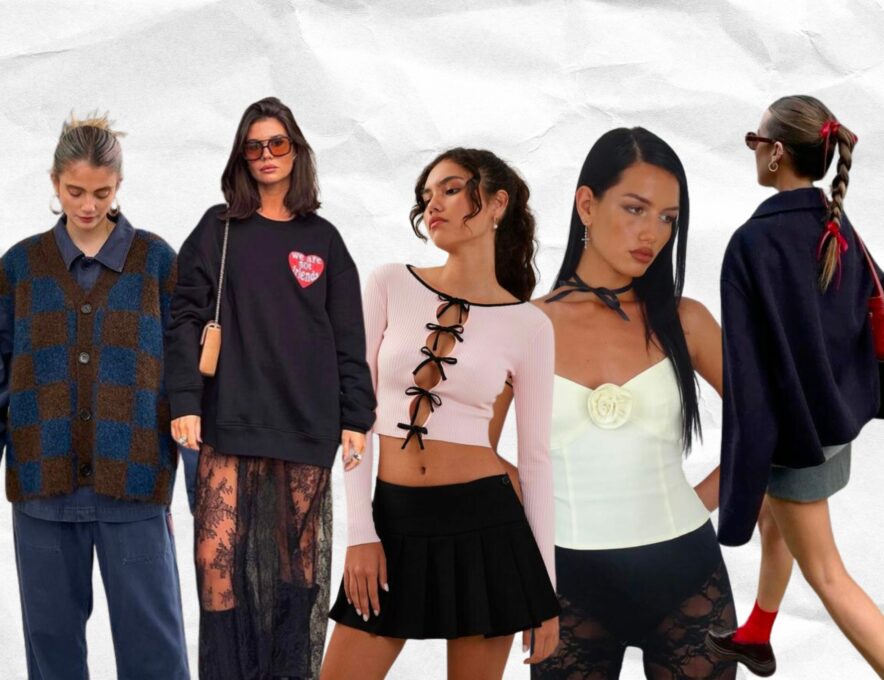Fashion’s Narrative: The Power of Trends

-
categoryCulture
-
authorCheyenne Jenkins
In the ever-evolving realm of fashion, clothing choices transcend mere aesthetics; they serve as a powerful means of self-expression. Fashion trends don’t just influence our style; they shape personal narratives, defining how we’re perceived by the world.
Just like celebrities, who understand the profound impact their fashion can have on public perception, everyday individuals navigate the transformative power of wardrobe choices. Miley Cyrus serves as an example, showcasing the potential of fashion to break away from established images. Her rebellious transition from a Disney-approved image to an edgier rock style in 2012, notably showcased in her ‘Wrecking Ball’ video, was a clear demonstration of her rebellion against the censored Disney style. This deliberate shift in style marked a significant moment where personal fashion choices became a powerful tool for self-reinvention, challenging preconceived notions and capturing the public’s attention.
Similarly, Lady Gaga, known for her avant-garde fashion choices, used to dress outlandishly to be taken seriously as a pop star or to command attention. However, as she navigates her acting career, she has opted for a more classic style. Lady Gaga’s intentional evolution in fashion demonstrates not only her versatility as an artist but also the strategic nature of personal style in shaping public perception. These moments of deliberate fashion transformation highlight the profound impact that wardrobe choices can have on an individual’s narrative and how they are perceived by the world.
But how do clothes impact non-celebrities? How do different trends shape perceptions, and are people drawn to these trends because they align with their self-perception?
Let’s explore a few trends:
Rosettes:
In the era of hyper-femininity dominated by TikTok aesthetics like “balletcore,” “coquette,” and “school girl,” rosettes emerge as a key trend. This resurgence of frills, pink hues, lace, and bows encourages a confident embrace of femininity, empowering individuals to express themselves freely. Beyond personal style, this trend shapes cultural conversations around gender norms, projecting an image of confidence, playfulness, and a celebration of individuality.
Eclectic Grandpa:
Drawing inspiration from classic grandfatherly attire, the eclectic grandpa trend combines oversized silhouettes with tailored pieces. This style exudes old-money charm, quiet confidence, and subtle swagger, making it a chic choice for those seeking a unique and timeless look. Choosing this trend can signal sophistication, individuality, and a departure from conventional fashion norms.
Bows:
The resurgence of girlhood themes in fashion is evident in the prominence of bows. From balletcore aesthetics to the Barbiemania obsession, bows have become a symbol of girlish charm, contributing to the current wave of embracing childhood relics in dressing. Incorporating bows into one’s wardrobe can convey a sense of nostalgia, innocence, and a connection to timeless femininity.
Millennial Pink:
Once deemed “cheugy,” Millennial Pink is making a powerful comeback, reclaiming its status as a defining shade. Choosing Millennial Pink can project a modern, youthful, and on-trend image, embracing the cultural nostalgia associated with the color. Individuals adopting this trend may be seen as trendsetters, capturing the essence of a generation that defined itself through this iconic shade.
Sheer:
Celebratory post-quarantine dressing, body inclusivity, and wardrobe versatility converge in the enduring trend of sheer fabrics. Sheer styles continue to captivate, offering a playful departure from the comfort-led pragmatic dressing witnessed during lockdowns. Opting for sheer fabrics can communicate confidence, body positivity, and a willingness to embrace fashion as a form of self-expression. Individuals embracing this trend may be seen as bold, progressive, and unapologetically embracing their bodies and personal style.
Fashion trends play a crucial role in how individuals are perceived by society. Beyond being a form of self-expression, personal style choices contribute to the narrative individuals present to the world. For instance, someone consistently embracing hyper-feminine trends may be perceived as empowering and confident, challenging traditional gender norms. On the other hand, adopting the eclectic grandpa aesthetic may signal a departure from mainstream ideals, presenting an image of timeless sophistication.
Moreover, the intentional use of fashion to break away from established images showcases the power of personal style in shaping public perception. Moments where individuals redefine their narratives through fashion decisions highlight the transformative force of wardrobe choices.
In conclusion, the symbiotic relationship between individuals and fashion trends is a dynamic force that not only shapes personal images but also contributes to broader cultural conversations. As we continue to witness the evolution of fashion trends, it becomes evident that each trend adopted is a strategic decision, influencing perceptions and crafting narratives that transcend the confines of conventional style. Fashion, in its myriad forms, remains a transformative tool, allowing individuals to reinvent, redefine, and project the image they wish to present to the world.